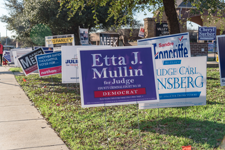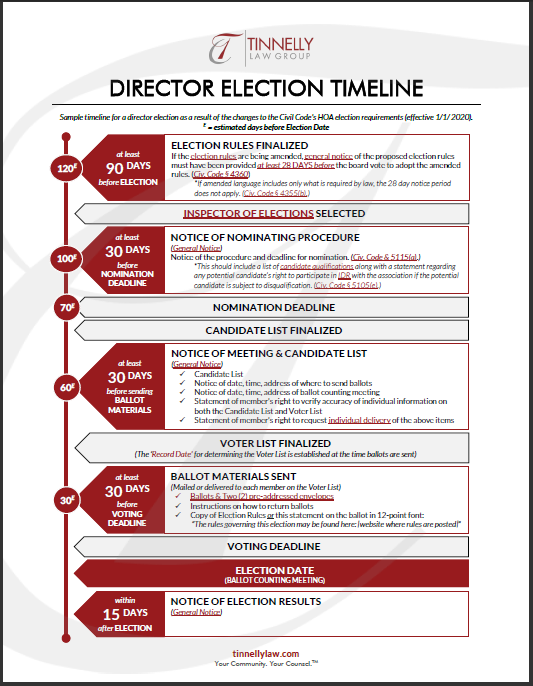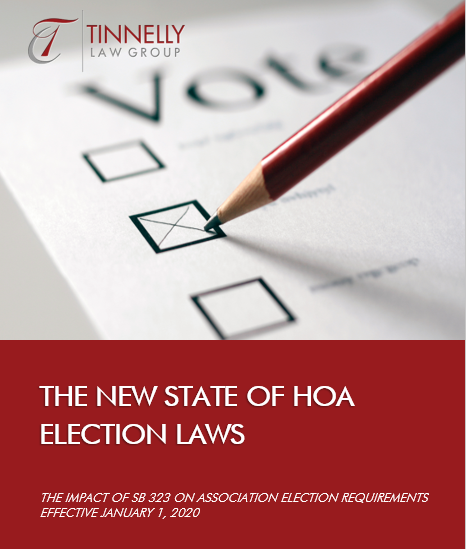*Asked & Answered
 Asked – We recently completed our annual meeting/election where approximately ninety-four percent (94%) of the membership participated. Almost immediately thereafter, we received a petition to recall the Board of Directors (“Board”). Must our association go forward with the recall election? What alternate options are available to the Board?
Asked – We recently completed our annual meeting/election where approximately ninety-four percent (94%) of the membership participated. Almost immediately thereafter, we received a petition to recall the Board of Directors (“Board”). Must our association go forward with the recall election? What alternate options are available to the Board?
Answered – Most common interest developments (“CIDs”) are formed as nonprofit mutual benefit corporations. Under California’s nonprofit corporation law, “any or all directors may be removed without cause” (Cal. Corp. Code § 7222 (emphasis added)); meaning that directors can be removed by the membership for any reason, or no reason at all. In order to initiate the recall process, five percent (5%) of the membership may submit a petition to the CID (usually addressed to its president) requesting that a special meeting of the membership be noticed for the purpose of recalling the Board (or any director). The notice requirements are addressed in California Corporations Code section 7511(c).
Recall elections can disrupt the effective operation of the CID and are often a costly endeavor. And, in most cases, such efforts fail to achieve the petitioning members’ desired objective—the removal of the Board. This is especially true in situations where the CID’s Bylaws allow for cumulative voting and members try to recall individual directors. (See Removal & Recall of Directors – Individual Director or Directors.) Nevertheless, under most circumstances, the CID must take action in response to a petition to recall the Board. However, based on the facts contained in the question presented, there may be other options available. The three options available in response to a valid recall petition are:
- Perform only those acts required to conduct a recall election;
- Do nothing in response to the petition other than to inform the petitioners that the Board has elected not to take action; or
- Perform all acts necessary to hold a recall election and concurrent director election.
Each option will be discussed in turn.
Option #1 – Perform only those acts required to conduct a recall election.
According to the facts provided in this question, the petitioning members have submitted a petition to recall the Board. The petitioning members have not also requested that a director election be held in the event the recall is successful. Thus, the Board could simply notice a special meeting of the membership to recall the Board without soliciting membership votes on replacement directors. This approach is problematic for the CID.
Under California Corporations Code section 7220(b), a director continues to serve until their successor is elected, “unless the director has been removed from office.” Thus, if the recall is successful, all directors immediately cease being on the Board; in other words, the CID will be without a Board. Failure to have a Board violates California Corporations Code section 7210, which states that “[e]ach corporation shall have a board of directors.” (Emphasis added.) Moreover, without a Board, the CID will be significantly prejudiced; it will not be able to carry out its obligations under California law and its governing documents (e.g., maintenance may cease, rule enforcement ends, the CID will be unable to respond to lawsuits, etc.).
Since the CID will be without a Board, members will be forced to file a petition with the Superior Court for the appointment of a receiver pursuant to California Code of Civil Procedure section 564(a)(9). The receiver will then manage the affairs of the CID and will initiate the procedure to conduct a director election. This, of course, is problematic in several respects. First, receivers are paid for their services. Most CIDs do not have adequate financial resources to cover unanticipated expenses. The receiver therefore may be forced (and will have the authority) to levy an emergency special assessment. Second, the receiver’s objectives are not usually in line with the interests of the CID’s members.
In light of the foregoing concerns, it would not be in the CID’s best interest to proceed in this fashion (i.e., conduct the recall election without a concurrent director election).
Option #2 – Do nothing in response to the petition other than to inform the petitioners that the Board has elected not to take action
Based on the information given, this option may be reasonable under the circumstances, especially given the overwhelming voter turnout (approximately ninety-four percent (94%) of the membership participated in the election). If such option is selected, the petitioning members will have the option of giving notice of the special meeting pursuant to California Corporations Code section 7511(c), or may petition the Court to require that such notice be given by the CID. Either way, the petitioners will be required to obtain a Court order directing the CID to prepare and distribute ballots as the petitioners do not have such authority. (See Cal. Civ. Code § 5115 (“Ballots and two preaddressed envelopes with instructions on how to return ballots shall be mailed by first-class mail or delivered by the association to every member….”).)
This option, while seemingly reasonable, raises similar concerns referenced above. To the extent members petition the court for an order compelling the CID to take action in response to the petition (including providing notice and preparing/distributing balloting materials), the CID will incur significant legal fees in defense of its position in this matter (unless insurance-appointed defense counsel steps in to provide a defense). And, in the event the petitioners are successful, the CID will incur costs relative to holding the recall election/director election. Again, most CIDs are not in a financial position to incur these additional costs.
Option #3 – Perform all acts necessary to hold a recall election and concurrent director election.
The third, and final, option—to conduct the recall election and concurrent director election—is the only option available to the CID that minimizes the CID’s financial harm and liability exposure. It is therefore the preferred course of action in response to a petition to recall the Board.
It is important to note that recent changes to the California Civil Code governing CID elections has made it practically impossible for a CID to comply with the timing requirements contained in California Corporations Code section 7511(c) and those contained in California Civil Code section 5115. Nevertheless, California Civil Code section 5100(a)(1) makes it clear that the procedural requirements contained within the Davis-Stirling Common Interest Development Act (“Act”) control—“Notwithstanding any other law….” The CID must therefore comply with the procedural requirements contained in California Civil Code section 5115 notwithstanding the degree to which same deviates from those contained in California Corporations Code section 7511.
Other Option Available to the CID to Prevent Recall Petitions Immediately After a Director Election
The foregoing has addressed the ways in which a CID may respond to a recall petition immediately after the conclusion of a director election. It does not, however, address how a CID may prevent such petitions from being brought in the future. One way in which a CID may prevent such petitions from being brought in the future is to adopt rules governing recall elections. Although the Act does not directly address the extent to which a CID may restrict recall petitions, other bodies of law have. For example, in the California Elections Code, a person is precluded from bringing a recall petition against “an officer of a city, county, special district, school district, community college district, or county board of education” if one ore more of the specifically identified limitations apply (e.g., the officer “has not held office during [their] current term for more than 90 days”). A CID may adopt a similar limitation for director recalls.
 |
Each recall petition is unique. Thus, while the foregoing provides general guidance based on the particular facts identified above, each CID must confer with its attorney to determine the appropriate response to a recall petition. |
-Blog post authored by TLG Attorney, Matthew T. Plaxton, Esq.
 *New Case Law
*New Case Law HOA Lawyer Blog
HOA Lawyer Blog


 *Asked and Answered
*Asked and Answered
 Asked – We recently completed our annual meeting/election where approximately ninety-four percent (94%) of the membership participated. Almost immediately thereafter, we received a petition to recall the Board of Directors (“Board”). Must our association go forward with the recall election? What alternate options are available to the Board?
Asked – We recently completed our annual meeting/election where approximately ninety-four percent (94%) of the membership participated. Almost immediately thereafter, we received a petition to recall the Board of Directors (“Board”). Must our association go forward with the recall election? What alternate options are available to the Board? Recall elections of individual Board members or of the entire Board are a source of great contention, divide and added expense for HOA’s. Prior to the passage of
Recall elections of individual Board members or of the entire Board are a source of great contention, divide and added expense for HOA’s. Prior to the passage of  As we draw near to the 2020 election, many residents living in HOAs have decided to install yard signs and other displays for their chosen candidate or cause. Many of these
As we draw near to the 2020 election, many residents living in HOAs have decided to install yard signs and other displays for their chosen candidate or cause. Many of these  We have just passed the two-year anniversary of
We have just passed the two-year anniversary of 

 *Asked & Answered
*Asked & Answered Amending a HOA’s Declaration of Covenants, Conditions and Restrictions (“CC&Rs”) can be a challenging endeavor. This is true, in large part, to the onerous approval requirements imposed by the
Amending a HOA’s Declaration of Covenants, Conditions and Restrictions (“CC&Rs”) can be a challenging endeavor. This is true, in large part, to the onerous approval requirements imposed by the